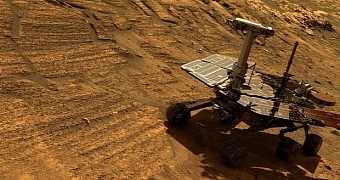Earlier this year, on March 24, NASA's Opportunity rover officially completed its first marathon on the Red Planet. Thus, on said date, the robotic explorer was precisely 26.219 miles (42.195 kilometers) away from its January 25, 2004 landing site.
Here on Earth, the most experienced of runners need only a few hours to complete a marathon. NASA's Opportunity rover, on the other hand, took about 11 years and 2 months to complete the landmark distance.
This is because, on the days that it did bother to travel to a new site, it covered only about 164 to 328 feet (50 to 100 meters) before stopping to enjoy the view. Even the run that completed the marathon saw the rover journey over merely 154 feet (46.9 meters).
The rover wasn't expected to last this long on Mars
Completing a marathon in 11 years and 2 months wouldn't impress anybody here on Earth. Having the Opportunity rover accomplish such a feat on Mars, on the other hand, counts as a success story when it comes to space exploration.
More so since the rover had to travel about 283 million miles (382 million kilometers) to get to Mars to begin with and many didn't even think it would survive its first winter on the Red Planet.
“When Opportunity landed on Mars 11 years ago, no one imagined this vehicle surviving a Martian winter, let alone completing a marathon,” said Mars Exploration Rover Project Manager John Callas of NASA's Jet Propulsion Laboratory.
The rover only ran this marathon to explore the planet
We humans run marathons to keep in shape and prove our endurance. NASA's Opportunity rover, however, strained its wheels to cover the landmark 26.219 miles (42.195 kilometers) to explore Mars and collect data for scientists on Earth.
It found signs of water near Mars' Eagle Crater and also in the proximity of the Endeavor Crater. Evidence indicates that this ancient water that once covered the region accommodating for the Endeavor Crater was not very acidic. Hence, primitive lifeforms might have also been present.
In the months to come, the Opportunity rover is set to explore a valley not far from the Endeavor Crater. The robotic Mars explorer will continue to search for signs of ancient water and inform mission scientists about its findings.

 14 DAY TRIAL //
14 DAY TRIAL // 